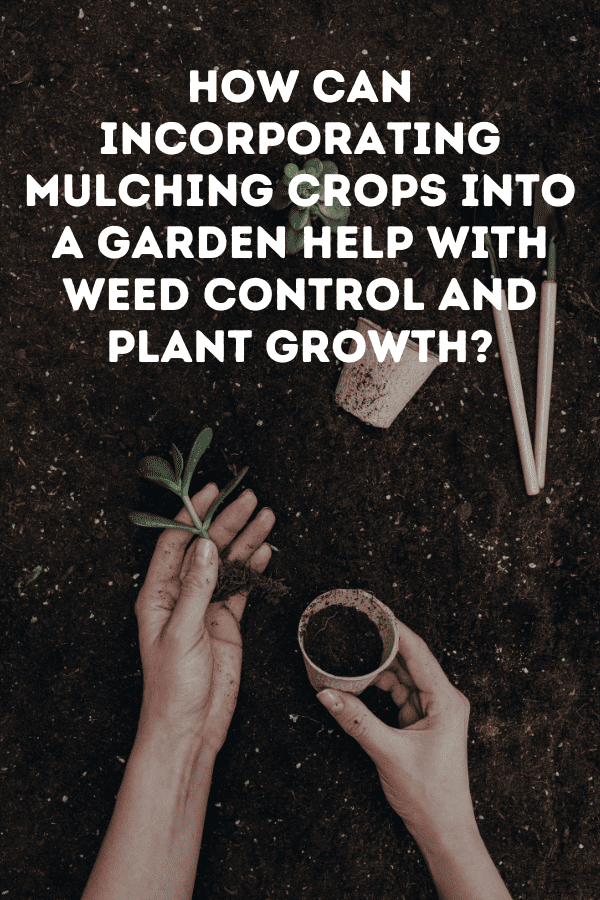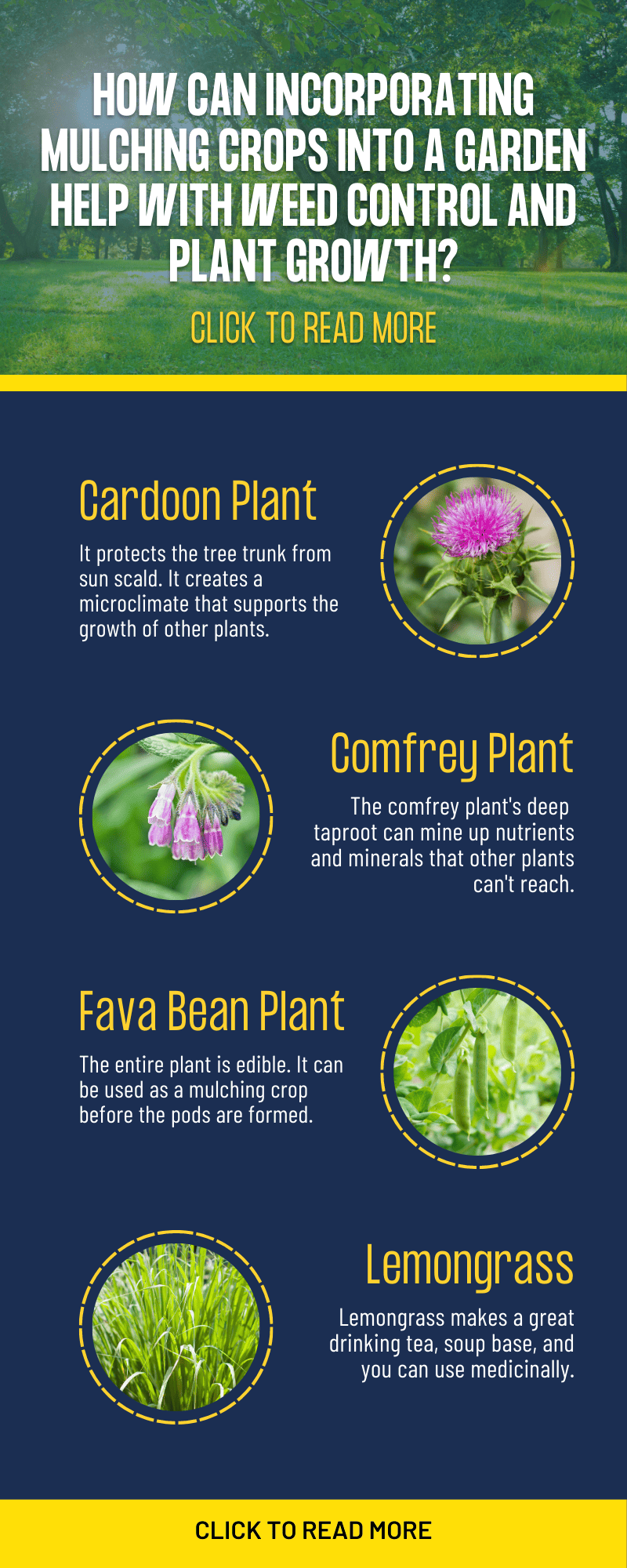
Save Money and Improve Soil Health: Try These Top 4 Mulching Plants
Today we will be exploring the top four mulching plants that can help facilitate an abundance of growth in your garden. As gardeners, we are often focused on growing edible crops throughout our garden. However . did you know that there are some varieties of plants that can also help keep moisture in the soil, build quality soil, and provide added nutrients to your plants as they grow?
Let's jump right in and explore these top four mulching plants.
First on our list is the cardoon plant. This plant looks similar to an artichoke plant. The stalks of this plant that have edible uses. Unlike the artichoke, where we harvest the flower heads, the cardoon plant works as a living mulch. It helps to shade the surrounding area. It protects the tree trunk from sun scald. It creates a microclimate that supports the growth of other plants. Using cardoon and artichoke leaves as mulch can smother out weeds. It breaks down quickly, creating excellent soil tilt.
Next on the list is the comfrey plant. Specifically, you want the bocking 14 varietal. This variety doesn't create any seeds. This makes it easy to control (the regular variety can quickly get out of control). It is a must-have for those trying to create a self-sustaining gardening system. Comfrey can be used as a living mulch, a chop and drop crop, or turned into a soluble fertilizer by adding it into a bucket of water and letting it sit for a few weeks. The comfrey plant's deep taproot can mine up nutrients and minerals that other plants can't reach. This makes it an excellent choice for mulching.
Third on the list is the fava bean plant. The entire plant is edible. It can be used as a mulching crop before the pods are formed. The plant has nitrogen root nodules. These are small lumps that form near the roots. If you chop off the top of the plant and leave these nodules in the ground the eventually break down and fertilize the surrounding area with nitrogen. The that are extremely beneficial for soil health, thus making it an excellent choice for mulching.
Lastly, we have lemongrass. Lemongrass can be grown as a perennial or annual. Lemongrass makes a great drinking tea, soup base, and you can use medicinally. The leaves turn brown and die back at the end of each growing season. This makes it easy to harvest for mulching. The lemongrass mulch will repel unwanted insects. The mulch lasts an incredibly long time, making it a favorite for many gardeners.
Incorporating mulching crops into your garden can be beneficial for soil health, weed control, and plant growth. These four plants are just a few of the many varieties that can be used as mulch.
What's your favorite mulching crop? Let us know in the comments below!
Get out into your garden. Spend 10 minutes today, working towards creating the most abundant garden of your life.
Embed this infographic on your site.

